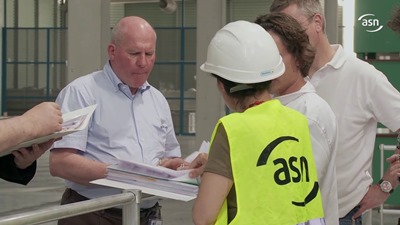How Essential It Is That the Owner Team Has Sufficient Project Experience For Project Success
In the same manner as successful projects require adequate governance, we also consistently observe that project success requires sufficiently experienced Owner organisations. Irrespective of the professionalism of the contractors, projects that are run with inexperienced or not sufficiently staffed Owners will often lead to inadequate delivery, delays and ultimately in disappointing results. In our new White Paper 2020-06 ‘How Essential It Is That the Owner Team Has Sufficient Project Experience For Project Success’ we investigate more in detail the causes of this phenomenon and what can be done to avoid it.

Inadequate Owner experience will translate into inadequate Owner supervision of the project, and substantial delays in taking decisions.
Relying on the experience of execution contractors to compensate for inadequate Owner experience is often not sufficient and the temptation of contractors to take advantage of the situation may be irresistible. Owners lacking experience may not be willing to delegate actual decision-making to contractors fearing commercial consequences, but may not actually take decisions either, or only very slowly, leading to very difficult situations. The issue is compounded when the Owner employs many contracted personnel of diverse origin rather than staff personnel in its project supervision team.
Owners may lack either of technical expertise, or project execution expertise, or both. Sometimes the Owner team budget is too restricted for proper quality personnel and associated capacity.
Projects conducted with inexperienced or insufficient Owner project management teams are often nightmares for all parties involved and often lead to substantial schedule and cost overruns. A sufficient level of experience on the Owner side – and the capability to take decisions based on this experience, is an essential success factor. A sufficient Owner team budget and agreement that properly experienced key resources must be hired staff personnel even if that bends usual HR policy are essential factors to achieve success. Read our new White Paper 2020-06 ‘How Essential It Is That the Owner Team Has Sufficient Project Experience For Project Success’ to understand more about this important issue.
If you can’t access the link to the white paper, copy and paste the following link in your browser: https://www.projectvaluedelivery.com/_library/2020-06_Owner_team_sufficient_project_experience_v0.pdf












How To Manage Licensing Requirements in Project Definition and Execution
Depending on the industry, the licensing process and associated requirements can be a critical activity for the success of the project. In highly regulated industry such as aerospace, rail or nuclear, licensing issues can become the critical path and even potentially derail the project. In our new White Paper 2020-03 ‘How To Manage Licensing Requirements in Project Definition and Execution’ we detail the issues associated with licensing and other regulatory aspects, and what are the best practices to manage them properly in the project definition and delivery process.
Regulatory requirements or licensing obligations may impact the project design, procurement, construction, and sometimes also the final product produced by the facility. For large projects, several regulatory fields may be applicable, and several authorities involved separately. For example, a pharmaceutical facility will be subject both to regulations on the safety of operation and to medical regulations on the quality of the product.
In our ever-increasingly regulated world, licensing requirements can easily become the critical path for large projects. It is often the case at two specific moments:
This is particularly obvious in many transportation industries, as well as in the nuclear industry. Even on smaller projects where this effect may be less noticeable, the need to go through a licensing process can produce unexpected changes in the project definition and implementation phase.
The issue is compounded by the fact that application file reviews by regulatory agencies are generally not fully predictable in terms of duration and effort, creating a substantial uncertainty as to the project execution schedule.
Good practices exist that are exposed in the White Paper. Some challenge areas are also developed:
Licensing requirements must be taken seriously and are often intrinsically linked to the final performance of the project. The licensing process can easily become the critical path or jeopardize the effective start-up of the facility. A number of actions must be taken early to include licensing requirements in the project definition process. Still, additional precautions must be considered to avoid the impact of possible change of regulations, licensing conditions and avoid missing some licensing aspects which could be highly detrimental to project realization and the economics of the future facility. Read our new White Paper 2020-03 ‘How To Manage Licensing Requirements in Project Definition and Execution’ to understand better how to deal with this issue.
If you can’t access the link to the white paper, copy and paste the following link in your browser: https://www.projectvaluedelivery.com/_library/2020-03_licensing_requirements_in_project_definition_execution_v0.pdf